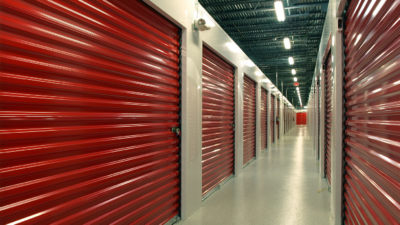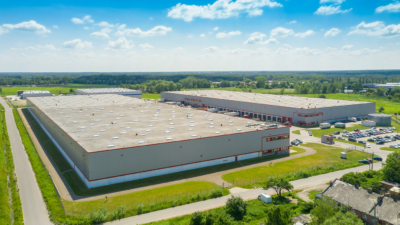Our latest report, the Industrial U.S. Seaport Outlook, presents an engaging, visual representation of the key facts about the major seaports and perspective on the trends impacting these ports and the surrounding industrial real estate markets. Learn more about one of these seaports: the Port of New York and New Jersey.

“The Port of New York and New Jersey is where containerization first began with the sailing of the Ideal X from New Jersey to Houston in 1956. In Northern New Jersey, port-related users and e-commerce companies looking for same-day delivery to the New York City area have helped keep vacancy rates at historical lows, particularly in submarkets near the Port of New York and New Jersey. As New Jersey continues to set new port volume records, demand for new construction has surged, evidenced by the 12.9 million square feet of industrial product under construction — up from 4 million square feet during this time last year. The Port of New York and New Jersey continues to invest in its operations in order to handle larger container ships and to improve operations. New Jersey’s industrial market has responded well, recording historically high leasing activity, rental growth and construction starts along with increased investor demand.” — Michael Markey, Executive Managing Director | Woodbridge
CAPABILITIES:
The Port of New York and New Jersey has a harbor depth of 50 feet, deep enough to handle vessels capable of holding up to 13,000 TEUs. The port contains six container terminals and 61 cranes— with 47 cranes able to handle Post-Panamax vessels (6,000 TEUs).
The Port of New York and New Jersey operates extensive environmental programs, ranging from proposed strategies to reduce air emissions from shipping to an Environmental Management System to reduce the impact of facilities operations.
TRADE:
A majority of the total containerized volume coming through the Port of New York and New Jersey is from imports. At the end of 2016, 70.2% of loaded containers handled at the port were from imports. Top trading partner countries in 2016 were: China/Hong Kong, India, Germany, Italy and the Netherlands. Pharmaceuticals, gasoline and motor vehicles are the top imported items, while motor vehicle parts, motor vehicles and skin care products are the top exports.
INTERMODAL:
The Port of New York and New Jersey’s Express Rail System handles more than a third of the cargo that feeds the Eastern Seaboard, with coverage to every major city in the Midwest, Northeast and Eastern Canada. Class I railroad partners such as CSX Intermodal, Norfolk Southern and Canadian-Pacific Railway service the port. The port’s three on-dock rail terminals (with a fourth under construction at Port Jersey) handle same-day transfers between ship and rail. The port is also investing $1.5 billion through 2024 to enhance port access by rail, which will include improvements such as an expanded roadway capacity and greatly modernized intermodal rail service.
REAL ESTATE IMPACT:
Because of the large surrounding population, the Port of New York and New Jersey is a major demand driver for many industrial markets across the Northeast and Mid-Atlantic U.S. However, the markets that receive the most direct benefits are Northern New Jersey and Central New Jersey. 2016 set the high watermark in leasing and net absorption in these markets and while these numbers will be difficult to surpass, the markets continue to fire on all cylinders.
Every major statistical category in Northern and Central New Jersey has been moving in the right direction in early 2017. The vacancy rate continues to decline, despite more than 4 million square feet of new construction in the past nine months. Much of the new product being delivered is leased prior to completion or shortly thereafter. The industrial market has also seen explosive asking rent growth. In fact, the average asking rent is up 36.4% from its low point in Q3 2011 and is up 13% from its pre-recession peak in Q4 2007.
To learn more, explore the Industrial U.S. Seaport Outlook.
Also: Get a sneak peek of the insights into Port of Long Beach | Port of Los Angeles | Port of Oakland

 Colliers Insights Team
Colliers Insights Team
 Aaron Jodka
Aaron Jodka

 Stephanie Rodriguez
Stephanie Rodriguez